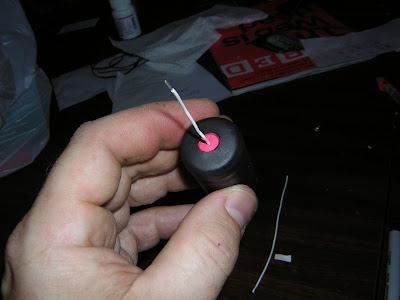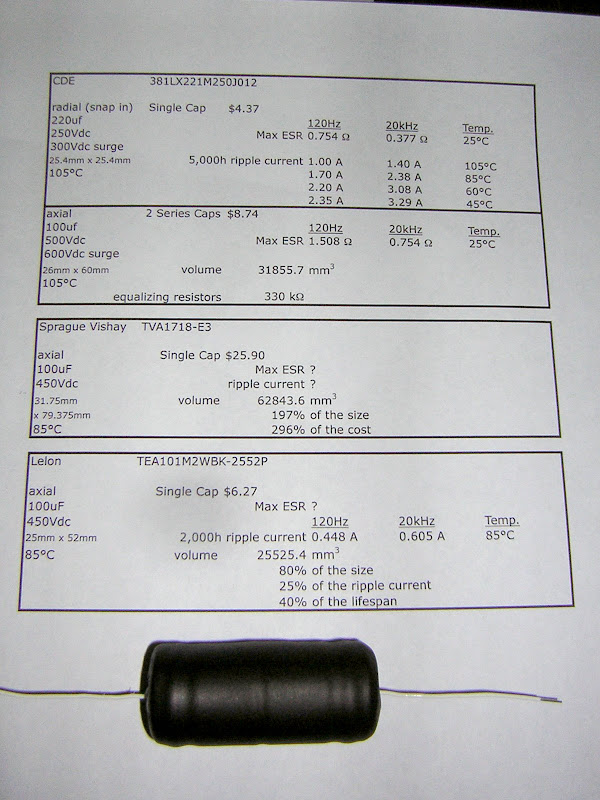that I made!
wanted a big beefy axial filter cap and didn't want to shell of the $27 Mouser wants for a 100uf/450v Atom. Sure some places say they have these for ~$10 but what do I know about them? Even Sprague lists no ESR or RIPPLE CURRENT or LIFETIME data.
I had 2 excellent CDE caps, the 220uf 250v 381lx units which are rated to 12,000h ripple life at 85C, with decent ESR and a full 105C rating. They are also among the most compact caps for their capacity, a scant 1" x1".
But they are snap-in, thus was born the Snap in to Axial (SITA) project.
I made 2 little PCBs

and then added equalizing resistors and tied them in series with some stout copper tape and 22awg PTFE/Cu/Ag wire

and closed them up in a nice piece of shrink tube Harbor freight sells


it looks (on paper) better than the Atom and other axials from the Mouse

wanted a big beefy axial filter cap and didn't want to shell of the $27 Mouser wants for a 100uf/450v Atom. Sure some places say they have these for ~$10 but what do I know about them? Even Sprague lists no ESR or RIPPLE CURRENT or LIFETIME data.
I had 2 excellent CDE caps, the 220uf 250v 381lx units which are rated to 12,000h ripple life at 85C, with decent ESR and a full 105C rating. They are also among the most compact caps for their capacity, a scant 1" x1".
But they are snap-in, thus was born the Snap in to Axial (SITA) project.
I made 2 little PCBs
and then added equalizing resistors and tied them in series with some stout copper tape and 22awg PTFE/Cu/Ag wire
and closed them up in a nice piece of shrink tube Harbor freight sells
it looks (on paper) better than the Atom and other axials from the Mouse
Comment